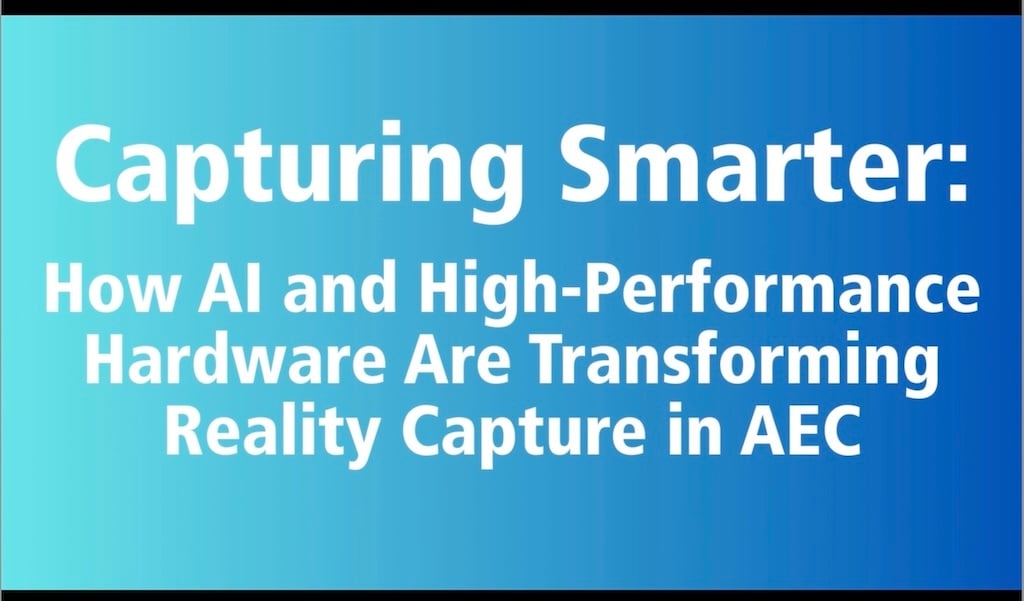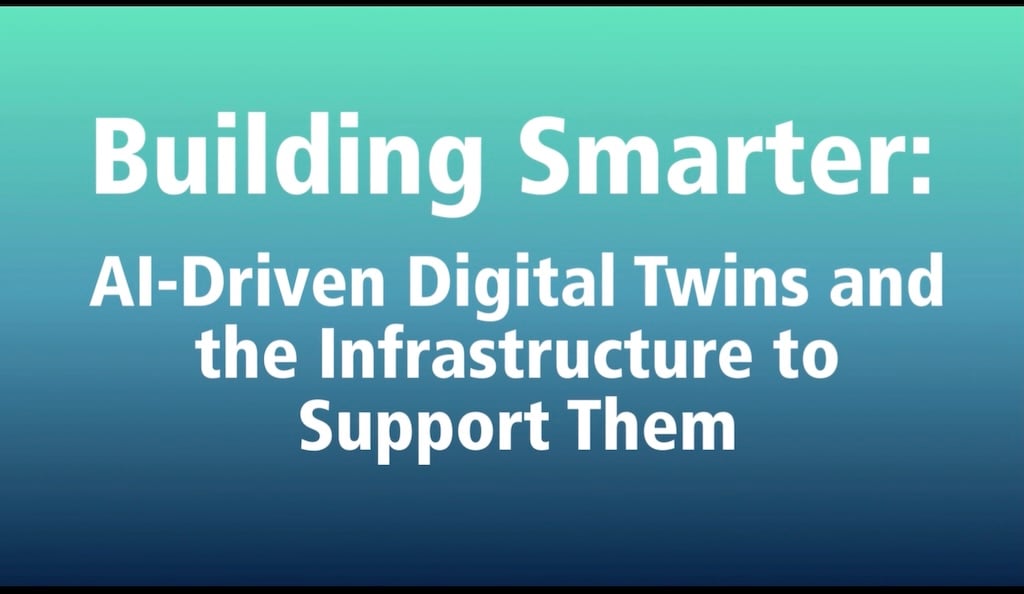Last week, in the first part of this article we discussed that the United States’ infrastructure has received an average of a “C-“ grade from the 2021 American Society of Civil Engineers, showing that our roads, bridges, and railways are in serious decline. Read examples of two different projects where using BIM and digital twin technology has been an important part of the improvements.
What’s Next
The next real question is how will the US take on the next phase of fixing our infrastructure? Bentley’s vision is for us to Build Back Better, as is the current administration’s. We have an opportunity to not just fix the potholes, but to use technology to reimagine our road system, bridges, railroads, airports, and ports to better them for the future. Let’s not turn around in 20 years and just have the same potholes to fill. The technology exists today to help engineers and architects solve the big issues of today, including building to fulfil zero-carbon mandates, and maintain assets to a state of good repair. We must lean on technology. Our challenge is an exciting one, to grasp on and push our government to fund these projects.
Steve explained, “We do think we're at a tipping point here. We’re at an intersection, if you like. It's not going to be easy. There are likely to be a few twists in the road, but I hope you've seen that our users—in the US, Europe, and Asia—are truly leading the way in terms of using innovation and digital twins to deliver different and improved outcomes. So, I'd say that if you or your organizations are yet to take those first steps towards the kind of digital transformation we've spoken about to meet the challenges that we've highlighted, then take a look at those reports.
Regardless of whether you're going digital, as we call it, the reason has to be to deliver different and improved outcomes. It might be to increase your profits, or do more work for less money. It might be to reduce carbon emissions, improve quality, meet different mandates and legislation, or simply to collaborate better. It’s still early days in their adoption, but the proof already exists and Bentley really does believe that digital twins can help transform your business and be at the heart of how we reimagine the future of infrastructure for a better tomorrow.”
Across US government agencies, there is a push for use of digital twins, or 3D digital design data. The US Federal Highway Administration is promoting the use of this technology in its Every Day Counts program. Its focus is on “helping owner-agencies, designers, and construction contractors with little or no experience in 3D engineered models get started in implementing this technology.” And, it offers a plethora of information on 3D digital design from general information, how to get started, full case studies, and more. With this already strong push for digital twin technology, all we need is more funding and more dedication to using the technology.

Image source: ozerkina/stock.adobe.com.
What Might Funding Look Like?
Not only are we talking about funding for the physical work, but we’re also talking about increased funding for the technology behind that work.
When Cadalyst spoke with Katherine and Steve after the EFCG’s 2021 Technology Leadership Conference, Steve explained, “It also comes back to . . . the legislation and the funding in North America. Look, we can carry on doing the same old thing and getting the same old results, but we've got an opportunity here, whether it's as a result of COVID or through the increased funding for a generation of jobs or whatever. [We have] a real opportunity to do things differently to work smarter and change those outcomes.”
Katherine stated that, “In the US we keep talking about the fact that this is a generational life-changing opportunity for equitable infrastructure. Better transportation is the key that unlocks a better quality of life, as communities, families, and livelihoods depend on the ability to get to where they need to be. What makes this investment a game-changer is the marriage of the advanced technology alongside the massive infusion of targeted funding. It's the moon and stars aligning, and the opportunity is right there for the US to seize.
She continued, “The expectation is to fund projects that revitalize the economy and improve service. One of the challenges that we foresee is that can often mean a focus on routine maintenance and upgrade work. Yes, potholes should be addressed, but let's really think about the opportunity at hand with transportation infrastructure to achieve the meaningful gains that can be made here. Bentley recently participated in the SASHTO Conference which is a [southern] regional conference of our DOTS in Florida and that was a constant theme. DOTs are hard at work determining what they are going to do to be good stewards of tax-payer money, challenging themselves not only to build back but to build back better and smarter. As I see it, that can be accomplished by infusing advanced digital technology. I hope that we go after the ‘shovel-worthy’ projects from the get-go and not just the potholes. Choosing innovative projects that will allow the US to best leverage this generational investment will ensure meaningful transportation progress and equity for all stakeholders.”
Katherine added that, “While these new programs won’t be created until the infrastructure bill is passed by the House, they will likely look like the existing Accelerated Innovation Deployment (AID) Program. Award amounts may cover up to the full cost of the innovation program, to a maximum of $1 million. Typically, funds are available at an 80% federal share, which require a minimum of 20% cost share by the requesting agency with technologies aligned with the Every Day Counts initiatives.”
She also pointed out that there are two competitive grant programs included in the Infrastructure Bill, “The technology and innovation deployment program, and then there's a public transportation innovation program. What's unique about these grants is that they’re solely focused on innovation. The innovations that they're looking for are maximum interoperability with other systems, products, tools, or applications boost in productivity—all seeking to manage the complexity of data with enhancing project safety and quality. Additionally, innovations that reduce project delays and cost overruns, while increasing resilience and equity, are of interest. This is really the first time where we've allocated this much funding and aligned the investment with the demands of innovation. The US government is finally realizing that if we weave in advanced technology along with our stimulus investment, we're going to greatly accelerate the pace of what US DOT’s can achieve.’”
Building Back Better
Bentley Systems is part of the Coalition for Smarter Infrastructure Investments, a group of businesses that “promote federal policies to modernize our nation's aging infrastructure by unleashing the promise of proven technologies to build and maintain infrastructure in a way that is more timely, more equitable, and more green—all while increasing transparency and efficiency.” The coalition advocates four main goals. In a nutshell, they include using modern technology, promoting sustainability, improving productivity, and ensuring global competitiveness for the US.
All of these goals are within our grasp if we move to take advantage of the Infrastructure Bill with its funding and once-in-a-generation push for innovation and growth. Find out more how you can use technology to build back our infrastructure, homes, buildings better.
What’s Next?
It may seem overwhelming to begin, but with some insight into how other companies are moving forward, you’ll learn from their experiences and gain insight into how best to move forward in your company.
- Visit McKinsey’s web site and read up on how businesses like yours are moving forward.
- Read case studies from Bentley Systems on already-realized BIM projects that are helping to save money, reduce carbon emissions, and keep people safe.
- Write to your Congress representatives and let them know you want to see funding for technology included in the Infrastructure Bill: Senators and House of Representatives.
- Follow Bentley Transportation on LinkedIn to learn about industry trends
- Reach out to Bentley iTwin experts and discuss your business needs.
Lara Sheridan
Lara Sheridan is Cadalyst's managing editor and has been with Cadalyst for many years, bringing her editing, writing, and design expertise to the magazine and its readership.
View All Articles




Share This Post